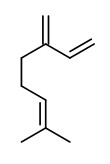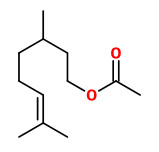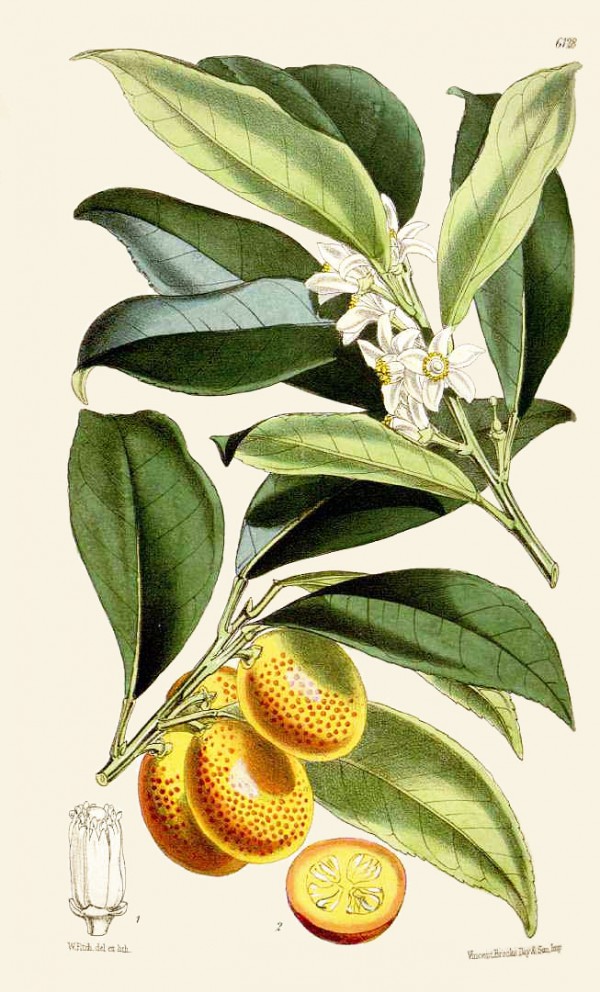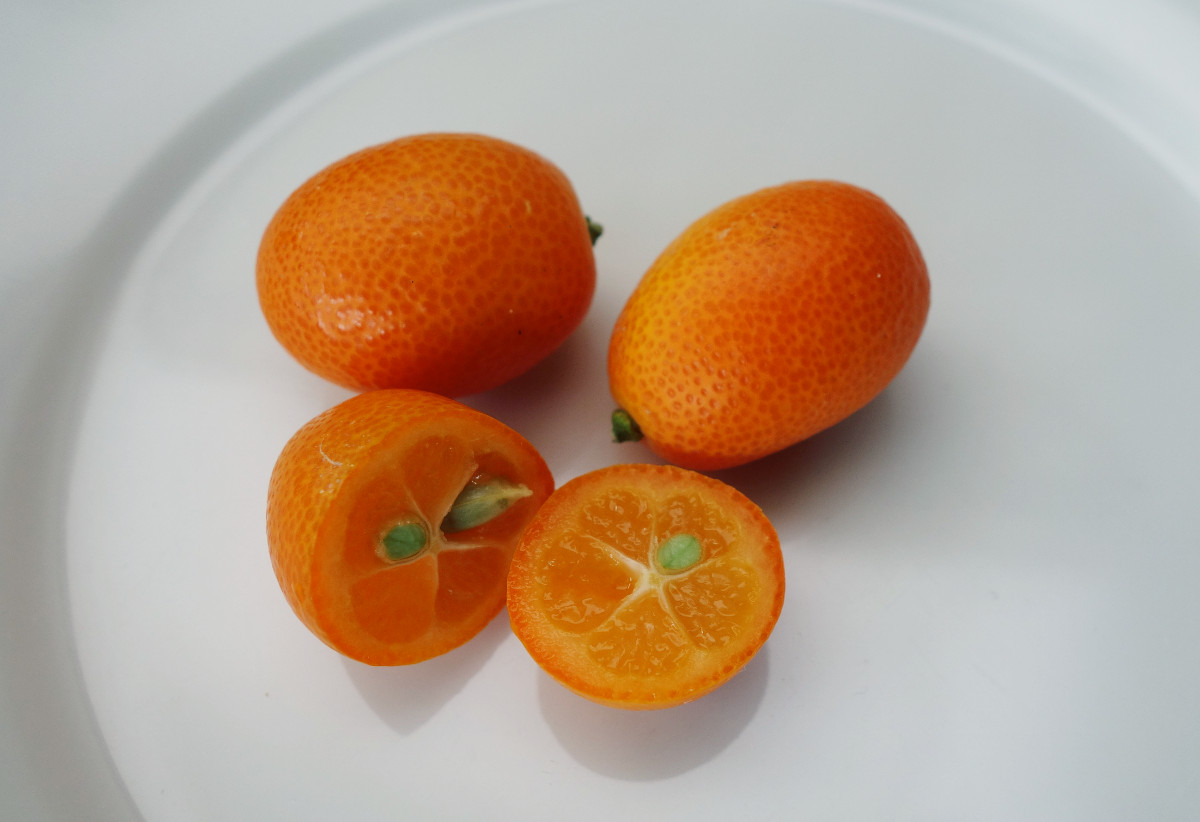Citrus japonica Thunb. - syn.Citrus margarita Lour.; Fortunella margarita (Lour.) Swingle.; Fortunella japonica (Thunb.) Swingle; F. obovata Tanaka - Rutaceae
金柑 jin gan (chin.), kumquat, Kumquat
Evergreen shrub or tree, up to 5m tall, native to Southeast China, cultivated elsewhere; branches sometimes with small thorns; leaves ovate-lanceolate to long elliptic, dark glossy green; flowers white, 1-3 in leaf-axils; fruits orange, ellipsoid to ovoid-ellipsoid or round, 1.5-3.5 cm in diam., oil dots slightly expanded; seeds 2-5.
„None of the cultivars, formerly recognized as species, has been found in truly „natural“ habitats. They are cultivated on a large scale in S China and have sometimes become naturalized.“
http://www.efloras.org/florataxon.aspx?flora_id=2&taxon_id=242313265
Analysis of the flower scent with SPME/GC-MS showed β-ocimene (20.1%), 6-methyl-5-hepten-2-one (12.0%), 2-aminobenzaldehyde (10.7%), limonene (10.7%), methyl anthranilate (10.7%), ethyl acetate (5.3%), linalool (4.1%), nonanal (4.1%), decanal (4.1%), α-pinene (2.9%), acetophenone (1.2%), and indole (0.7%) as main components.
[Ham, D. Y., & Seung-Ho, K. O. (2018). U.S. Patent Application No. 15/548,867]
„The fruit is eaten whole, skin and all. The inside is still quite sour, but the skin has the sweeter flavour, when eaten together it produces an unusual refreshing flavour… Kumquats are cultivated in China, Korea, Japan, Taiwan, Southeast Asia, Nepal, southern Pakistan, Iran, the Middle East, Europe… and the United States… They are much hardier than other citrus plants such as oranges… The fruit can be eaten cooked but is mainly used to make marmalades and jellies. It is grown as an ornamental plant and can be used in bonsai. The plant symbolizes good luck in China and other Asian countries, where it is kept as a houseplant and given as a gift during the Lunar New Year.“
http://en.wikipedia.org/wiki/Kumquat
„This study was conducted to determine the composition of kumquat (Fortunella japonica Swingle) cold-pressed peel oil and to determine which volatile components are primarily responsible for the aroma of this oil. Eighty-two compounds were identified in the oil by GC and GC-MS. The major compounds were limonene (93.73%), myrcene (1.84%), and ethyl acetate (1.13%). Flavor dilution (FD) factors and relative flavor activities (RFA) of volatile constituents were evaluated by aroma extract dilution analysis with gas chromatography−olfactometry (GC-O). Camphene, terpinen-4-ol, citronellyl formate, and citronellyl acetate showed high FD factors (≥5) and RFA (>20). Citronellyl formate and citronellyl acetate were regarded as the characteristic odor components of the kumquat peel oil from the results of FD factor, RFA, and GC-sniffing. Citronellyl acetate is considered to be the odor component most similar to kumquat by organoleptic evaluation with GC-O.“
[Characteristic odor components of kumquat (Fortunella japonica Swingle) peel oil., Choi, H. S., Journal of agricultural and food chemistry, Vol.53(5), 2005, 1642-1647]
 limonene |  myrcene |  α-pinene |  terpinen-4-ol |  citronellyl acetate |
The major volatile compounds of F.margarita fruits (analysed by HS-GC/MS) were limonene (73.8%), α-pinene (6.9%), β-myrcene (3.7%), γ-terpinene (2.0%), trans-carveol (1.6%), terpinolene (1.5%), and 4-terpineol (0.9%). Methylbutenol (1.1%) was also present.
[Comparison of lipids, fatty acids and volatile compounds of various kumquat species using HS/GC/MS/FID techniques., Güney, M., Oz, A.T., Kafkas, E., Journal of the Science of Food and Agriculture, 2014]
Using a thiol-selective isolation procedure and various GC methods, 1-p-menthene-9-thiol has been identified in kumquat (the first report in any food thus far).
[Schoenauer, Sebastian, and Peter Schieberle. „Screening for novel mercaptans in 26 fruits and 20 wines using a thiol-selective isolation procedure in combination with three detection methods.“ Journal of agricultural and food chemistry 67.16 (2019): 4553-4559]

Citrus japonica Thunb.; Curtis, W. Botanical Magazine (1800-1948) Bot. Mag. vol. 100 (1874)
http://plantgenera.org/species.php?id_species=249889

Citrus japonica fruits, CC BY-SA 3.0, Author: Andreas Kraska